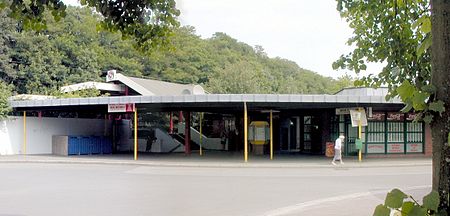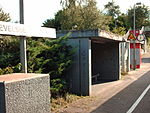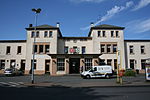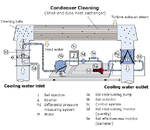Gevelsberg Hauptbahnhof

Gevelsberg Hauptbahnhof (German for Gevelsberg main station) is a railway station in the municipality of Gevelsberg in the German state of North Rhine-Westphalia. The station was opened along with a section of the Düsseldorf-Derendorf–Dortmund Süd railway, opened by the Rhenish Railway Company (German: Rheinische Eisenbahn-Gesellschaft, RhE) between Wuppertal-Wichlinghausen and Hagen RhE station (now Hagen-Eckesey depot) on 15 September 1879. It has two platform tracks and it is classified by Deutsche Bahn as a category 6 station. It is the only Hauptbahnhof in Germany, which in fact is not a Bahnhof, but a Haltepunkt ("halt", defined in Germany as having no sets of points). It and Remscheid Hauptbahnhof are the only Hauptbahnhof stations which are served only by S-Bahn trains.
Excerpt from the Wikipedia article Gevelsberg Hauptbahnhof (License: CC BY-SA 3.0, Authors, Images).Gevelsberg Hauptbahnhof
An der Königsburg,
Geographical coordinates (GPS) Address Nearby Places Show on map
Geographical coordinates (GPS)
| Latitude | Longitude |
|---|---|
| N 51.323756 ° | E 7.339558 ° |
Address
An der Königsburg 5
58285
North Rhine-Westphalia, Germany
Open on Google Maps










